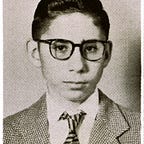Reinterpretation
In my many years ( 1963–2016) with a darkroom I went through many shifts in style, particularly when I printed my negatives. I first thought high contrast was best for impact. Then I swung in the opposite direction and opted for getting all those shades of gray and detail in the near blacks. And these prints I sometimes printed dark and at other times not so much. With my b+w negatives I went in the same two directions but in the end settled with as many continuous tones I could muster and avoided extreme contrast. I also tried split printing using variable contrast paper and a colour head to which I could dial yellow for softness and then magenta for higher contrast.
What this means to the average person examining a photograph printed by a photographer is that you will mostly never see two the same unless the photographer happens to have printed them one after the other on the same day.
The intentions of a photographer at one time would have been more evident in the examination of a 35mm slide or a bigger one (called a transparency). Then the only variation of that unique (original to stress the word) image would be in its reproduction as a printed image.
With my darkroom now history in our new Kitsilano duplex I find myself doing the very same that I did before which is to re-interpret myself. This time the tool is the scanner combined with Photoshop. I have a very old Photoshop but it has that invaluable tool called Shadow/Highlight. If I play with it particularly in RGB (not in LAB where there is little if any colour variation) the results can be most interesting.
Some time ago I wrote here about Mónica Salvatella. I illustrated the blog with an interpretation I have varied here. I am pleasantly surprised with the possibilities.
Originally published at blog.alexwaterhousehayward.com.
